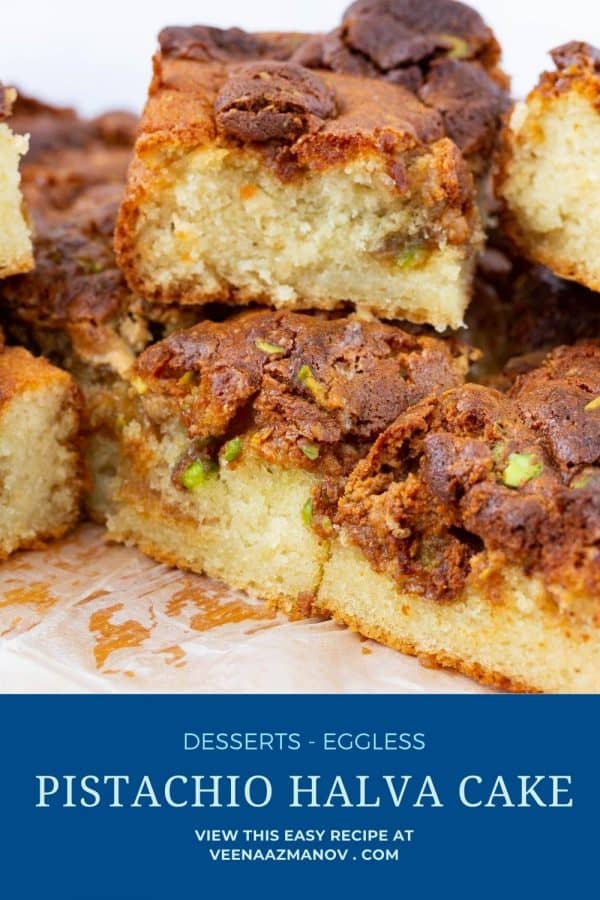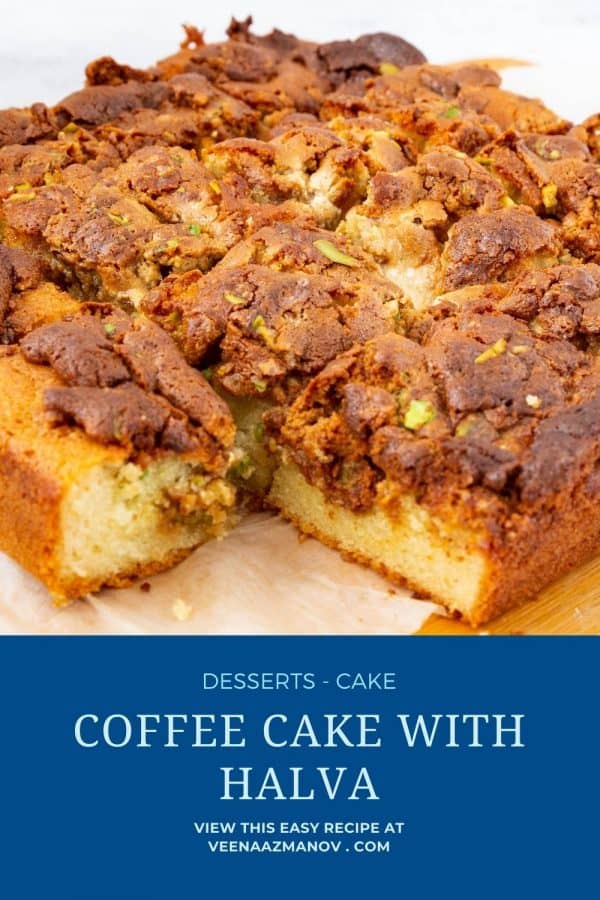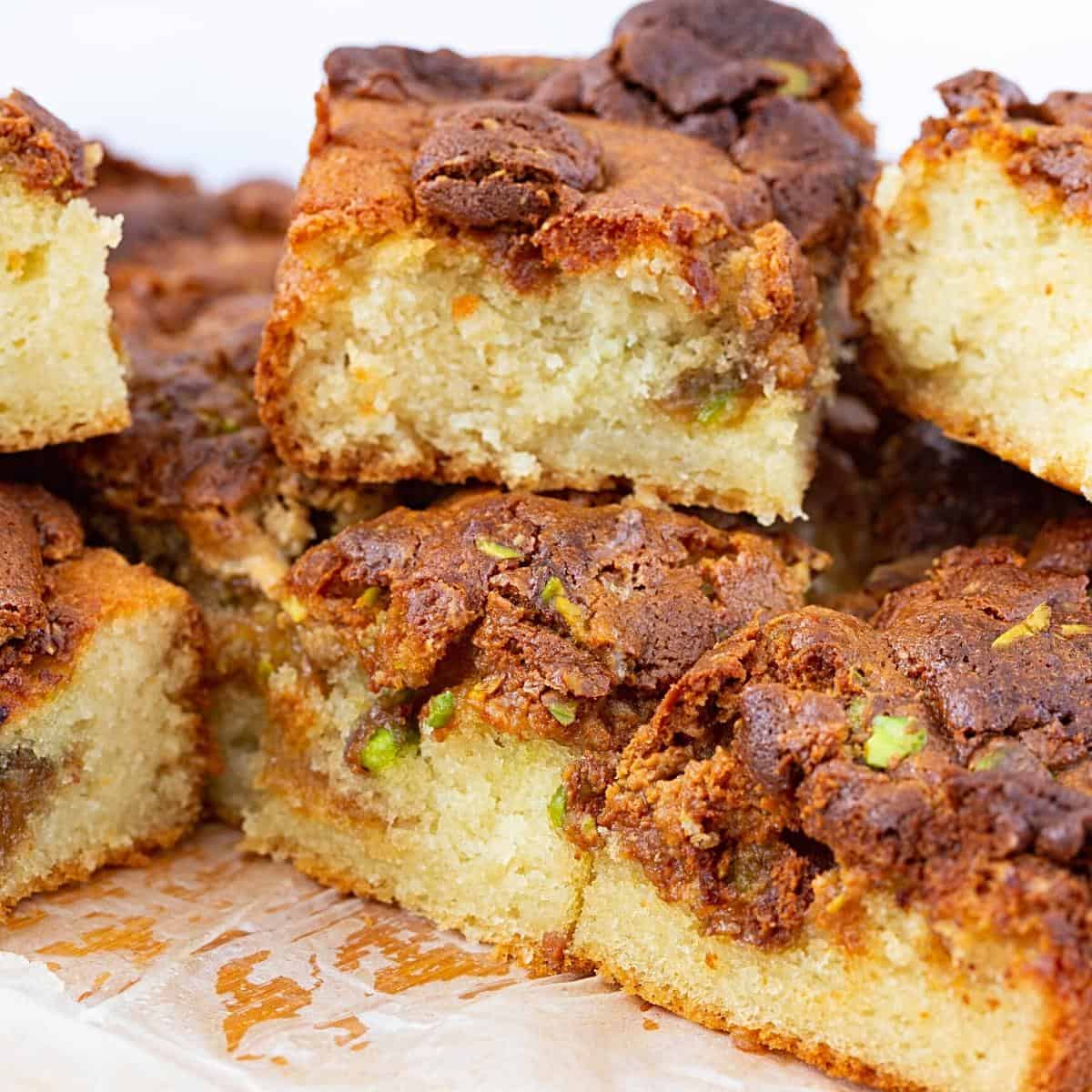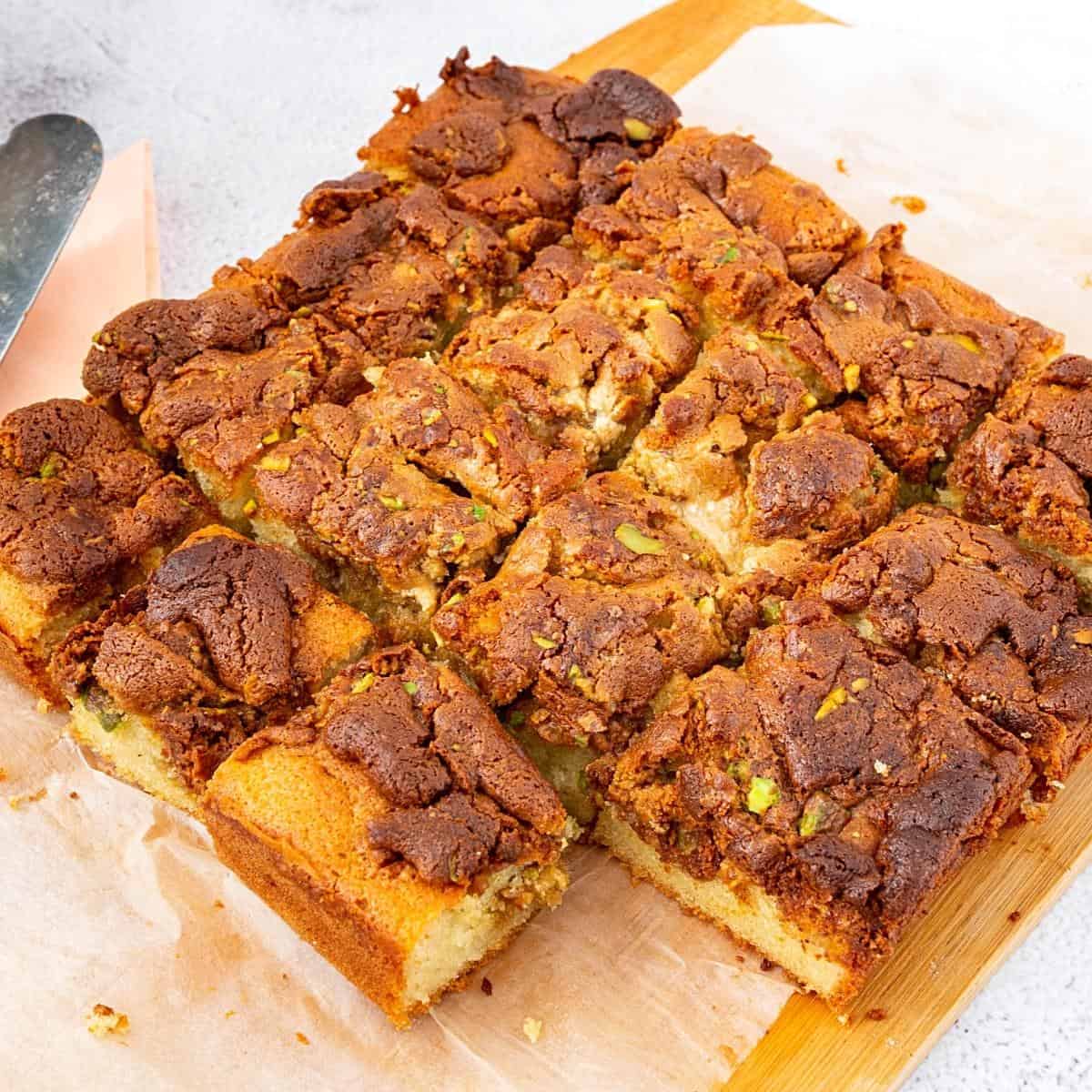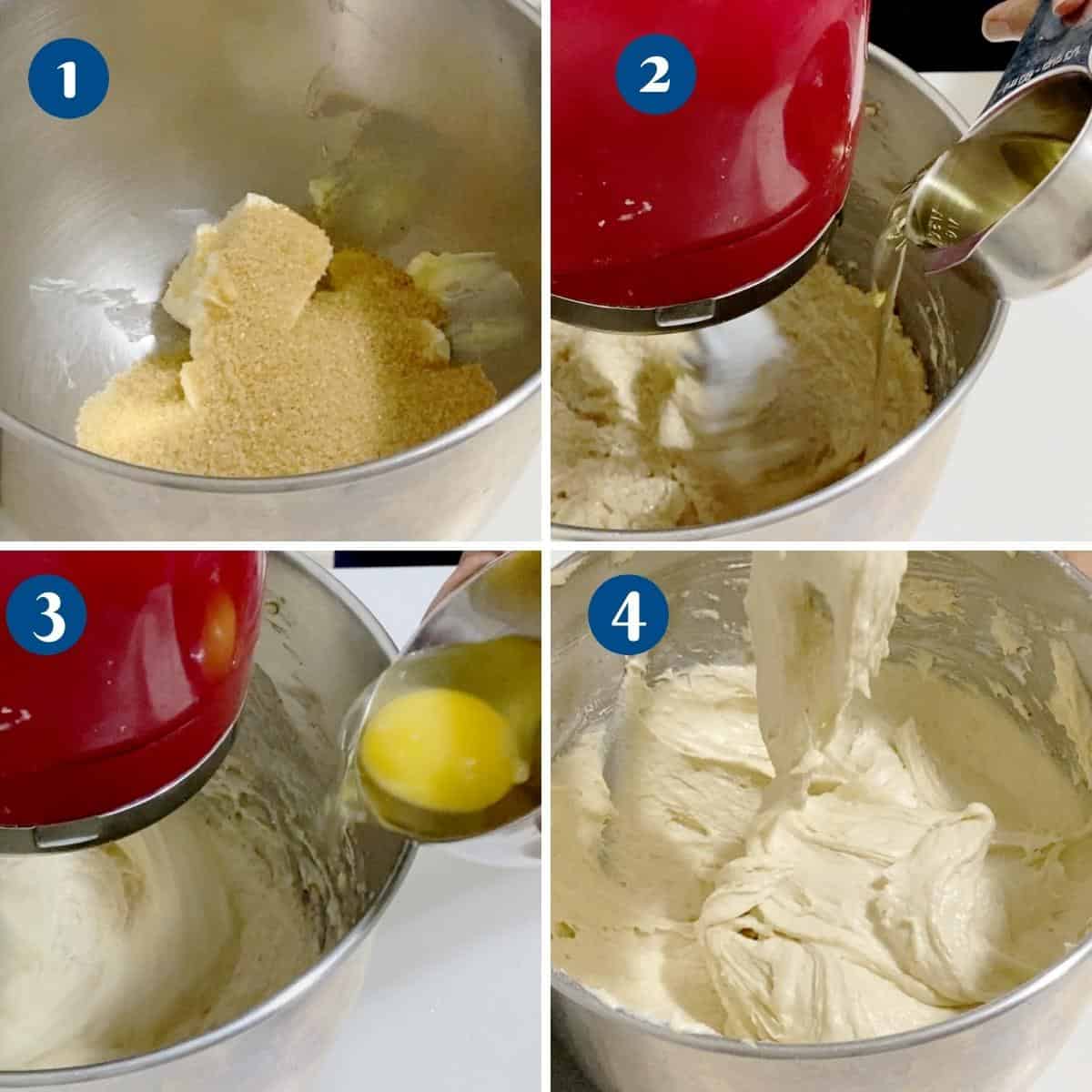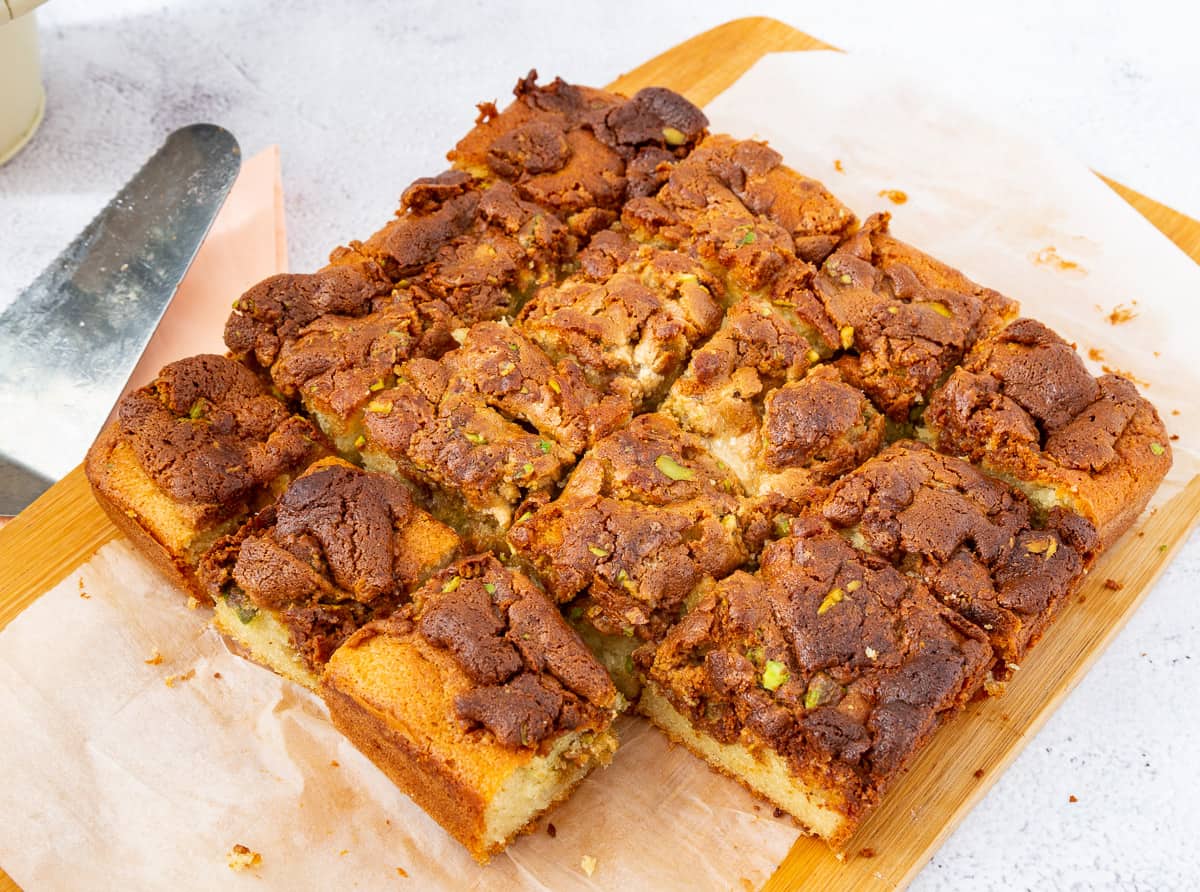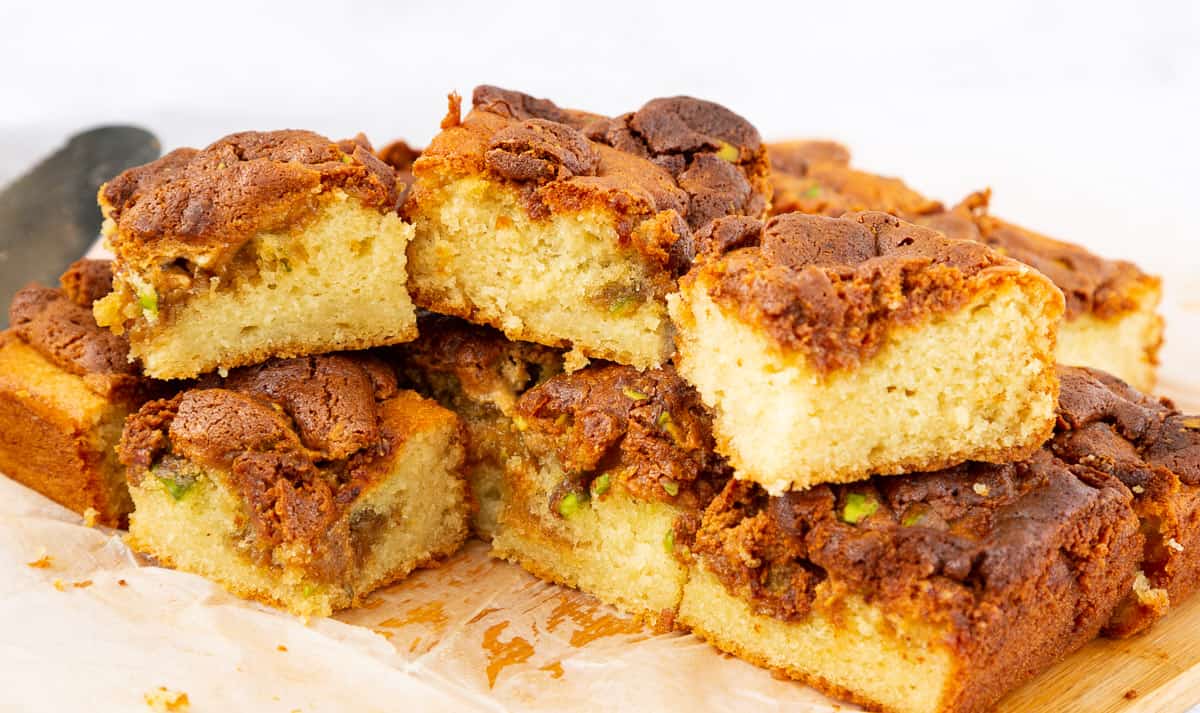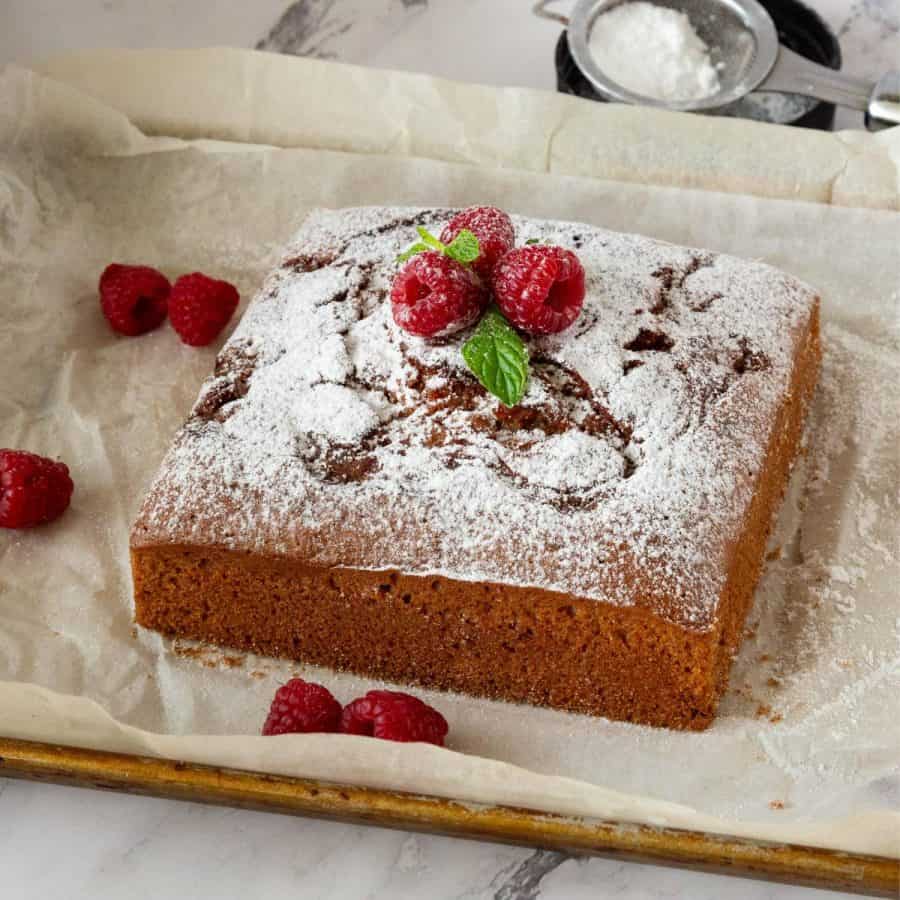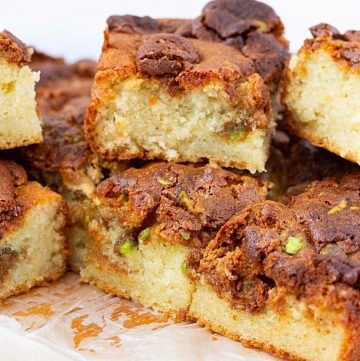Halva cake – Coffee cake with pistachio halva
Preheat the oven at 325°F / 165°C / Gas mark 3. Chop the halva into small pieces or crumble it with your hands. Set aside. Grease and link a 9 x 9-inch square cake pan with parchment paper for easy removal. You can also use an 8-inch round cake pan.Pro tip – I am using a square pan with a parchment sleeve for easy removal.
In a bowl, combine the all-purpose flour, baking powder, baking soda, and salt. Set aside. In a bowl of a stand mixer with the paddle attachment, cream together the butter, oil, and both sugars until light and airy.Pro tip – The oil will create emulsification with the batter so it looks more whipped rather than fluffy. Then, add the eggs, one at a time, to the batter making sure to combine each well into the batter. Next, add the flour mixture and sour cream in three batches.Pro tip – Make sure each egg is well incorporated before you add the next one to prevent the batter from curdling.
Pour the batter into the prepared baking pan, spread with an offset spatula towards the edges. Top with the crumbled halva all over.Pro tip – I like to leave the halva on top so it is baked partially immersed in the cake. But, you can certainly mix it up with the cake batter too.
Bake for 30 to 35 minutes or until a skewer inserted in the center comes out clean. The top will be darker in color. Once baked, set aside to cool for 10 minutes. When cooled, cut the cake into 16 squares as shown in the video. You can dust with powdered sugar but I like the presence of the dark halva on top.
Pistachio Halva Hamantaschen Cookies Hamantaschen with Halva Tahini Cookies Pistachio Cookies or Chocolate Pistachio Cookies
Sour Cream Coffee Cake Recipe Cinnamon Apple Cake Coffee Crumble Cake Cinnamon Coffee Cake See all coffee cake recipes
Frequently asked questions
Did you LIKE this recipe? Save it for later. You can find my recipes on Pinterest. Follow me on Facebook, Twitter, and Instagram.Subscribe, and I’ll send you new recipes right to your inbox. The specific ingredients and preparation methods can vary depending on halva’s cultural and regional variations. Some common types of halva include:
Sesame halva: This type of halva is made primarily from ground sesame seeds and sugar or honey. It has a rich, nutty flavor and a slightly crumbly texture. Nut-based halva: This variety of halva is made using ground nuts, such as almonds, pistachios, or walnuts, combined with sugar or honey. It often has a softer, more fudge-like texture compared to sesame halva. Flour-based halva: In this type, flour is cooked with butter or oil and then combined with sugar or honey to create a sweet, crumbly halva. It may also contain additional ingredients like nuts, dried fruits, or spices.
Halva is enjoyed in various forms and is popular in Middle Eastern, Mediterranean, Central Asian, and Indian cuisines. It is commonly found in markets, sweet shops, and households as a dessert or snack. Halva can be served sliced or in blocks, and it is sometimes garnished with nuts, seeds, or dried fruits. Its flavors and textures can vary, but it is generally known for its sweetness and richness. Thank you for sharing - Save for later
